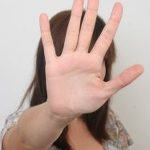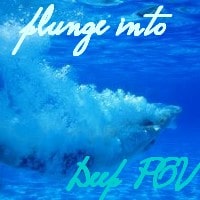By Alicia Rasley
Let me start by saying that there are no absolutes in fiction-writing. Deep POV is now trendy, and it’s appropriate for many types of stories, and also for our highly interactive culture. However, it’s only one of several POV approaches, and it’s not right for every genre, every book, and every author.
 First, I should quickly define deep point of view. (I go into this in much greater depth in my book, The Power of Point of View.) Deep POV is a variety of single POV, where an entire scene (or chapter, or book) is told through the perspective (or point of view) of one of the characters in the scene. Deep POV takes this further—the narration is done not just in the perspective but in the voice of the POV character. It’s meant to establish almost no distance between the narrator and the reader—rather like a first-person feel with third-person pronouns. Here’s an example:
First, I should quickly define deep point of view. (I go into this in much greater depth in my book, The Power of Point of View.) Deep POV is a variety of single POV, where an entire scene (or chapter, or book) is told through the perspective (or point of view) of one of the characters in the scene. Deep POV takes this further—the narration is done not just in the perspective but in the voice of the POV character. It’s meant to establish almost no distance between the narrator and the reader—rather like a first-person feel with third-person pronouns. Here’s an example:
Allie thought Saturday was never going to come. All day Friday she kept waiting for school to be over, but it was taking forever. Every time Allie looked at the watch her daddy had bought her for Christmas, the numbers had barely changed at all. She thought maybe the battery wasn’t so good anymore, but if it wasn’t, then the clocks at school weren’t working either, ’cause when her teacher dismissed them for lunch, it was the exact time on Allie’s watch that it was s’posed to be. (Tara Taylor Quinn, Jacob’s Girls.)
The character is a child, and so the deep-POV narration uses the diction and sentence construction of a child. This lets the reader get an intense experience of who this person is and how she thinks.
Very useful. However, there are two points I want to make:
- Most writers who think they’re doing deep POV aren’t. They are doing single POV and confining the narration to one character’s thoughts and perceptions (and that’s FINE). But they are writing more in their own voice. There’s nothing wrong with that (single POV is by far the most common and accepted POV approach). What’s wrong is the writers who say they’re doing deep POV because they’re following a list of rules they got from somewhere, like “In deep POV, you never use the character’s name, and you never use ‘she thought’.” Deep POV is not about rules. It’s about being so into the character that you feel with her body, think with her mind, and write with her voice. It’s writing from inside the character, and those rules imposed from the outside? Worse than useless.
- Deep POV is not right for every story.
And since (2) is what I’m supposed to address in this blog post, let me get going on that.
A) Deep POV is not right for every author.
I’ve concluded that most of us have a natural POV approach, one that feels comfortable and right for us. And we can learn to write in other POVs, but when we’re writing most naturally, we’re probably going to write in our natural POV, and that’s going to sound most authentic. I’m not saying you should only write in your natural POV (my natural is single-third POV, but I’ve been writing a lot of first-person and enjoying it). But you shouldn’t feel you have to force yourself to write deep POV if every word feels wrong.
Why might it feel wrong? Well, if you’ve spent a lot of time working on your own voice, making it beautiful and evocative, you might not want to cede control of your prose style to a character. I’m an English teacher, and I spend way too much time every semester helping students distinguish sentences from fragments and comma splices.
Every time I write in deep POV, I find myself echoing the character (as I should in deep POV), who is invariably uncaring of grammar, not to mention easily distracted. So half his sentences are actually fragments, and half of hers are run-ons. That might be quite effective. But what if one of my students would brandish a highlighted page of Tony’s POV and yell, “Fragments all over the place!” (Well, actually, if one of my students could so effectively identify fragments, I’d give him an A right away.  )
)
Many writers are proud of their voice, and rightly so. You can be poetic and evocative in deep POV—even an illiterate character can think in lovely if broken prose—but it’s not, at base, YOUR voice (if it is your voice, you’re not really doing deep POV). It’s not supposed to be. And if you want to write in your own voice, if you think the reader will get more from “hearing” you, well, why not? The whole point of writing is to create an experience for the reader, and creating an interesting or lovely experience is a valid aim.
POV approach also connects to your worldview. Now no one else agrees with me on this, so take it with a grain of salt. But I think your natural POV might reflect your understanding of reality. Hey, give me a chance! Let’s say that you think that there is an absolute reality, but it’s not necessarily knowable by most of us. That worldview is the one expressed by omniscient POV—the “godlike narrator” knows everything, within and without the characters, and knows more than all the characters together.
 But maybe you think there’s no absolute reality, and that the only way to get close to knowing reality is to juxtapose the accounts of several people, a collage-like effect that is very similar to multiple POV. Now we single-POV types, we don’t know if there’s an absolute reality, and in fact, we don’t much care. We’re mostly concerned with the inner reality of characters, what they think and notice and value.
But maybe you think there’s no absolute reality, and that the only way to get close to knowing reality is to juxtapose the accounts of several people, a collage-like effect that is very similar to multiple POV. Now we single-POV types, we don’t know if there’s an absolute reality, and in fact, we don’t much care. We’re mostly concerned with the inner reality of characters, what they think and notice and value.
Well, you know, if you have one of those worldviews, your story choice and your POV choice will probably reflect that. And that’s good. It takes all kinds. That’s why we have several POV approaches, several genres, and many writers. There isn’t just one worldview out there, so there shouldn’t be only one POV approach. And you should at least start with the one that lets you express your worldview and voice, and—you didn’t really think I was going to say, “Anything goes,” did you?—refine it and reinvent it and revise it so that your writing is the best possible proof that your POV approach is right.
No, you won’t get it right the first time. Yes, you still must revise to make sure that your reader will experience what you want her to experience. But making your story and voice work well is plenty hard enough without adding in the pain of trying to write in a way that doesn’t feel right to you.
B) Deep POV is not right for every genre.
Most genres and sub-genres have their own preferred POV approach. Private-eye stories are usually in first-person. Mysteries are usually in some form of omniscient. Romances are usually in single-third POV. General (mainstream) fiction is often in either multiple or first person. The preferred POV reflects something about how the genre works—the mystery is about the mystery, not particularly about the character of the sleuth, so omniscient works well (as it does in many plot-driven stories).
 Private-eye novels, on the other hand, are indeed about the character of the detective (and the detective’s voice), so that snarky first-person narration allows that. The genres evolved a preferred POV approach because that approach usually (never say always
Private-eye novels, on the other hand, are indeed about the character of the detective (and the detective’s voice), so that snarky first-person narration allows that. The genres evolved a preferred POV approach because that approach usually (never say always  ) allows writers to create the experience for the reader which is desired in that genre (chills and fear in the thriller, thoughtfulness in the mystery, etc.).
) allows writers to create the experience for the reader which is desired in that genre (chills and fear in the thriller, thoughtfulness in the mystery, etc.).
You are likely to be drawn to the POV approach and/or the genre which feel right to you, which explore the themes and issues that are most important to you. So trust tradition. You can innovate if you understand WHY the horror novel is usually in single POV or sf/f is often in omniscient. The preferred POV approach usually helps create the desired experiences of that genre. So that’s a good place to start. And for most genres, deep POV is not the default (third person, at least—first-person can be pretty deep too).
C) Deep POV is not right for many stories.
Many stories would be pretty much unwriteable in deep POV. Plot-driven books, where information must be conveyed which the main character doesn’t have and action must be shown that the main character doesn’t witness, are usually told in a form of omniscient POV. Sweeping epics where worldbuilding or setting description are essential are better from omniscient too. Books where you are using an unreliable narrator are better from first-person.
Even tightly-focused character books can often be better-handled in a single-third person where your voice dominates. Dialogue-heavy books often benefit from the contrast of the conversational quality of the dialogue and the more formal quality of an omniscient or third-person narration. Stories with several major characters and a fast pace will often sound more coherent with multiple point of view. Comedy, which relies so much on the author voice, is usually in an omniscient ironic viewpoint.
That is, never feel pressured to write deep POV. It is not the only or best viewpoint approach. It’s only best if it’s right for you, the genre, and the story. Otherwise, try out the more traditional approaches and find the one that fits best.
About the author
Alicia Rasley is a nationally known writing workshop leader and the author of The Power of Point of View, a Writer’s Digest book. Her website, www.rasley.com, and blog (edittorrent.blogspot.com) have much free advice for writers.
Photo credits: plunge—Konrad Mostert; get out—StillSearc; notebook—typofi
 But before we finish up, I want to know what your thoughts are on deep POV in general. What do you think about deep POV? Does it jar you to read a book with inconsistent POV depth (ie in one sentence we’re getting the character’s thoughts directly and in the next it’s like we’re watching the scene from 10 feet away)? Do you enjoy writing in deep POV? Do you find it easy or challenging?
But before we finish up, I want to know what your thoughts are on deep POV in general. What do you think about deep POV? Does it jar you to read a book with inconsistent POV depth (ie in one sentence we’re getting the character’s thoughts directly and in the next it’s like we’re watching the scene from 10 feet away)? Do you enjoy writing in deep POV? Do you find it easy or challenging?  That’s a tough one—truly, a real conundrum. I have this problem all the time with characters who either a.) would never, ever sit around describing their everyday world or b.) think and speak in slang or obscure terms that not every reader is going to understand, but everyone else in the scene would.
That’s a tough one—truly, a real conundrum. I have this problem all the time with characters who either a.) would never, ever sit around describing their everyday world or b.) think and speak in slang or obscure terms that not every reader is going to understand, but everyone else in the scene would. .
. I’d also like a little more insight into exactly what she’s feeling there. She goes from a sad smile and tears in her eyes to door slamming, punching and growling. In these paragraphs, we see a good view of her penitence and regret, but the rest of the emotional progression could be a little clearer, since we’re in her head with her. (It’s kinda crowded, I know, but it’s where lots of readers like to be.)
I’d also like a little more insight into exactly what she’s feeling there. She goes from a sad smile and tears in her eyes to door slamming, punching and growling. In these paragraphs, we see a good view of her penitence and regret, but the rest of the emotional progression could be a little clearer, since we’re in her head with her. (It’s kinda crowded, I know, but it’s where lots of readers like to be.) I’m divided on this issue in my WIP, so I’d like to hear your opinions. When reading something in fairly deep POV, is it more natural to refer to the POV character’s family members as “his dad” or just “Dad”? Both have their advantages and disadvantages in my opinion, and I’ve seen both in first-person as well. I’m still pretty torn, so I’m turning it over to you. (Update: I’ve found my
I’m divided on this issue in my WIP, so I’d like to hear your opinions. When reading something in fairly deep POV, is it more natural to refer to the POV character’s family members as “his dad” or just “Dad”? Both have their advantages and disadvantages in my opinion, and I’ve seen both in first-person as well. I’m still pretty torn, so I’m turning it over to you. (Update: I’ve found my  )
) But maybe you think there’s no absolute reality, and that the only way to get close to knowing reality is to juxtapose the accounts of several people, a collage-like effect that is very similar to multiple POV. Now we single-POV types, we don’t know if there’s an absolute reality, and in fact, we don’t much care. We’re mostly concerned with the inner reality of characters, what they think and notice and value.
But maybe you think there’s no absolute reality, and that the only way to get close to knowing reality is to juxtapose the accounts of several people, a collage-like effect that is very similar to multiple POV. Now we single-POV types, we don’t know if there’s an absolute reality, and in fact, we don’t much care. We’re mostly concerned with the inner reality of characters, what they think and notice and value.  Private-eye novels, on the other hand, are indeed about the character of the detective (and the detective’s voice), so that snarky first-person narration allows that. The genres evolved a preferred POV approach because that approach usually (never say always
Private-eye novels, on the other hand, are indeed about the character of the detective (and the detective’s voice), so that snarky first-person narration allows that. The genres evolved a preferred POV approach because that approach usually (never say always 






